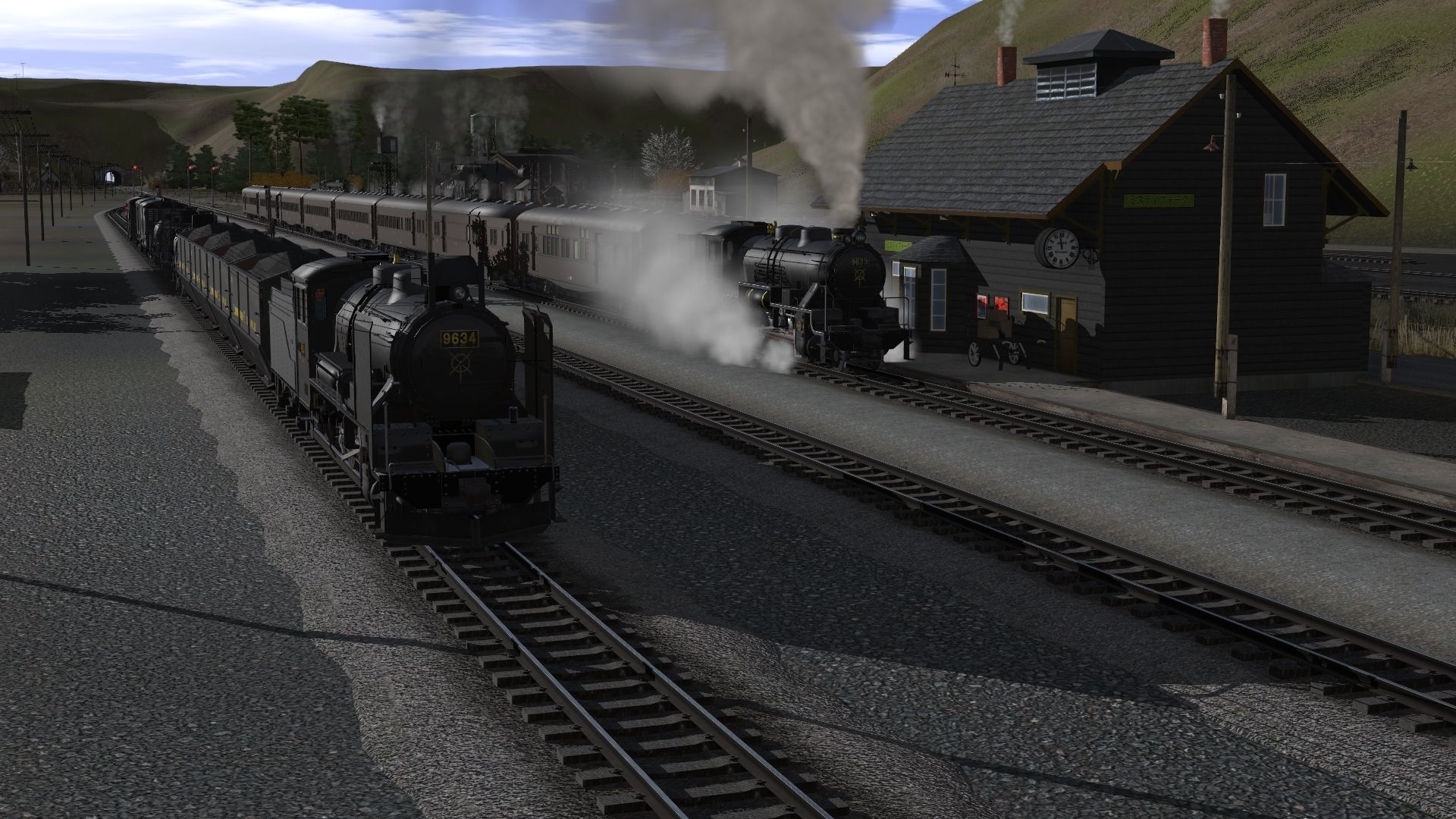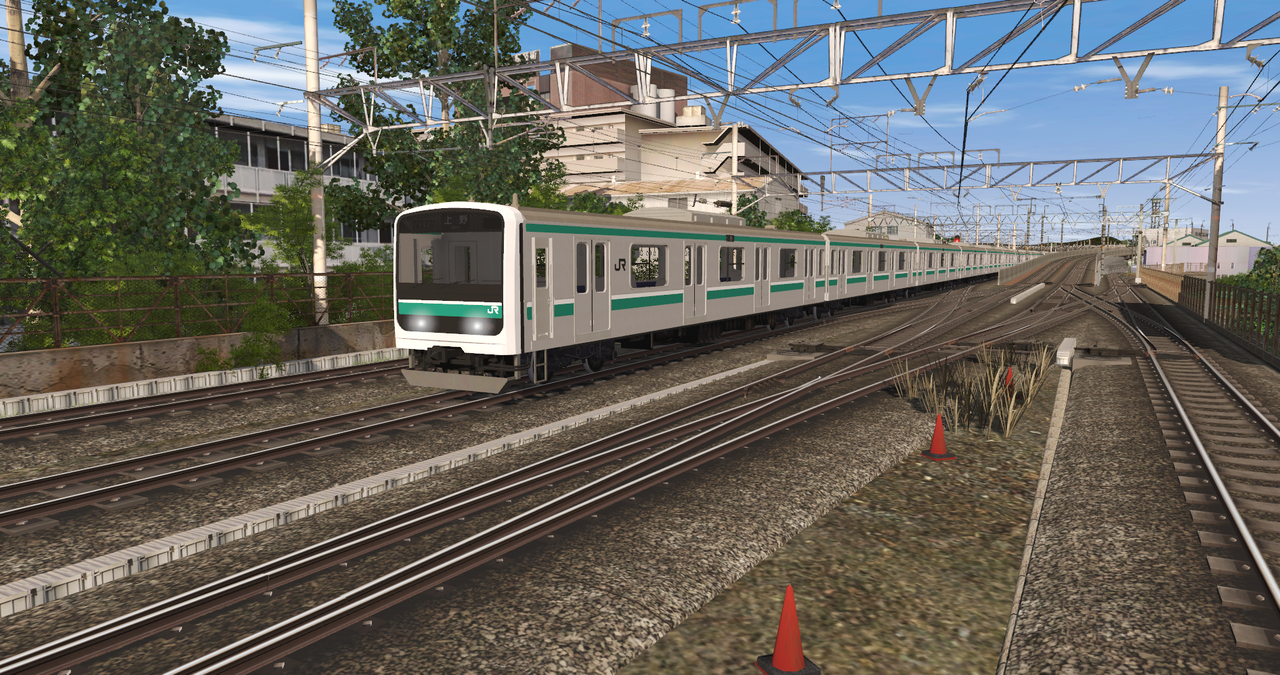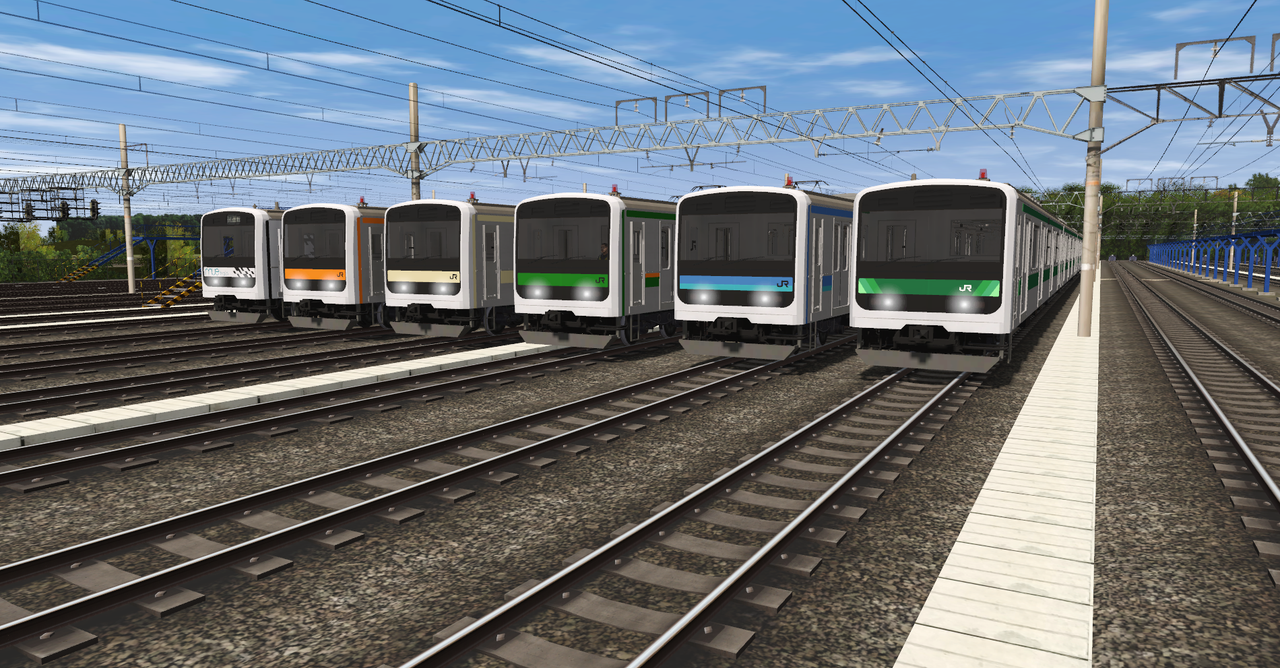Finally, after a few months of work, here's the final part of the 209 Series megapack - the Experimental and Training sets!
From left to right: MUE-Train and the training sets for Hachioji, Yokohama, Omiya, Nagano and Shirakawa ("E991 Series"). All these are already avaible on my website!
MUE-Train
This special train was introduced in 2008 by JR East as a testbed for new technological applications and equipment performance improvement trials, and was converted from former Keihin-Tohoku Line 209-0 Series set No.2, assigned to Urawa Depot.
Shortened from 10 to seven cars, repainted in a peculiar white livery and christened "MUE-Train" (MUltipurpose-Experimental), this set was fitted with all sorts and types of equipment in use by JR East, including three saftey systems: ATS-P, ATS-SN and ATC-6, enabling it to be used on all of JR East's (electrified) metropolitan-area lines.
During it's testing career, that continues to this day, the MUE-Train has been used to test an improved air suspension system, acquaplaning countermesaures, faster computer communication protocols, studying the impact of snow on braking and accelleration performance, and perhaps most importantly, the MUE-Train was used to extensively test INTEROS, JR East's new rolling stock self-diagnostic system (designed to replace the reliable but dated TIMS), wich has since become the new standard in Japan, being introduced in regular service in 2015 with the E235 Series.
209 Series-based training sets
These peculiar trains are used by JR East to train it's railwaymen. Four sets of this type exist, all formed of two cars, and each one is assigned to a different training center.
By the early '2000s, JR East was still using withdrawn JNR-era rolling stock, such as 113 and 103 Series trains, for training duties, depsite these train types (and their general layout, such as emergency door handles) being now radically different from the various "New Serieses" running in the metropolitan area; therefore JR East decided to replace it's older training sets with something more closer to the actual trains the company was now using.
Six two-car sets were manufactured in 2008 by Kawasaki Heavy Industries and delivered to three Tokyo Area training centers: Hachioji, Yokohama and Omiya. These training sets are identical to the "mainline" 209-0 Series, down to the interior arrangment and upholstery colour. Of course, that's their point as training sets, to be as similar as possible to the mainline stock, however, obviously some difference exist - there are two tell-tale fetaures (besides the 2-car formation): the livery, each of wich is unique to a training set (Chuo Line orange for the Hachioji set, cream white for the Yokohama set and orange and green "Shonan" colours for the Omiya set) and the presence of a red emergency light in place of the standard-issue flare (an actual thermal flare that is lit up electrically in emergency), this is because since these trains are to be used for emergency training, the flare is almost always used, therefore instead of having a flare that has to be replaced each time after it has been used, JR East decided it would've been infinitely simpler to just have a red flashing light wich can be turned on and off.
In 2019 another 209 Series training set was created, this time as a conversion from a withdrawn 209-3000 Series set from the Kawagoe and Hachiko Lines. This fourth training set has been converted to be exactly like the other three, but unlike those, it has not been assigned to a Tokyo area training center, but rather it was sent all the way to Nagano, since nowdays, "Shin-Keiretsu" derived trains are now the mainstay on rural lines as well.
All of the four 209 Series-based training sets are actually capable of moving by themselves, as they're fitted with all the standard necessary traction equipment, however since they are not fitted with train radios, they aren't allowed on mainline tracks (thus, for transfers they have to be hauled by an electric locomotive), meaning the only place they can actually run on their own is on dedicated "training tracks", wich are however always quite short (almost never longer than a couple hundred meters), and as such they'll rarely attain speeds higher than a handful of kilometers per hour. However this is not a problem, since these are meant for emergency and rescue training (such as fire drills). Actual train driving and conductor-duties training is done on dedicated simulators, wich are much more flexible.
Shirakawa E991 Series.
This four car set was built in 2000 as a training vehicle for JR East's Comprehensive Training Center in Shirakawa City, Fukushima Prefecture, where the general "basic" training of all of JR East's aspiring railwaymen is conducted (wether for drivers, conductors, maintainance of way or rolling stock, both for Shinkansen and conventional lines).
Formed as a full 4-car set, and made with bodyshells identical to the AC/DC E501 Series, but fitted in an unique green livery, the E991 Series is probably JR East's most unique piece of rolling stock, especially considering it can't move on it's own!
That's right, evrything on the E991 Series is a mockup, incluiding the pantograph, traction inventers and so on. The cabs are barebone, being fitted only with the most basic of training-necessary equiment and in some parts of the intermediate cars interior panneling is seemingly missing as well! Even the "E991 Series" designation is a mock-up: officially, this vehicle is not even legally considered a "train", depsite being externally identical to one, and as such never recieved an official series number - "E991 Series" is only written on the in-car number plate stickers. The E991 Series is also fitted with a proper working LED destination display, and is equipped with a ROM with station names from the Tokyo Metropolitan Area (such as Chiba-Minato).
Shirakawa's E991 Series is used for all sorts of training (from conductor to rolling stock maintainance), and it's positioned on a 500m-long stretch of actual 1067mm-gauge track, completely isolated from the rest of the railway network (JR East's Shirakawa Training Center is itself three kilometers away from the closest railway station - Shirasaka station on the Tohoku Main Line) but fitted with all the equipment that is found on mainline railways, such as signals, ATC balises, a 40m-long reproduction of a station platforms and even a proper catenary (altough unpowered!). The E991 Series can actually move up and down this short stretch of track, altough since it's unpowered, it has to be push and pulled by something else, such as a road-rail vehicle.
Obviously, since it's deep inside a restricted area, photos of the E991 Series are extremely scarce, and the train itself may only be seen by the pubblic during events and open days organized by the training centre itself.









